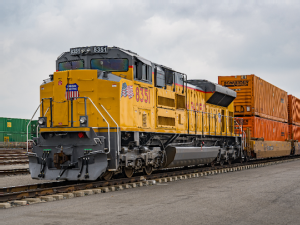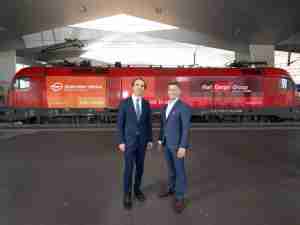Carmichael said, however, that the FRA could go further in addressing the needs of today's globalized intermodal transportation infrastructure. 'Ten years into the 21st century, we finally realize the United States must produce a new, holistic, sustainable, ethical, and environmentally friendly intermodal transportation system. This system would use alternative, reusable fuel sources to create an efficient 'rail-based' freight and passenger transportation network,' he said. 'The future begins now.'
'The Interstate Highway System of the previous century, created during the era of 'cheap fuel' and serving primarily the highways and airlines, has served the United States well,' he said, 'but today we have a population that has doubled in 50 years and could reach 400 million people by 2050, creating even greater mobility problems. We already have a deteriorating, badly stressed, and congested transportation infrastructure that cannot meet our international consumer or shipper demands. Today's 'container-based' global economy requires an interconnected, intermodal transportation system that uses the strengths and efficiencies of all modes of transportation, as opposed to a singular mode approach.'
Carmichael also said that FRA's 21st century National Rail Plan must also include Canada and Mexico. 'North America has a 240,000-mile rail ROW network that governments and private railroads have invested in for 150 years,' he commented. 'In most cases this rail network connects all of the major center cities and ports in North America [but not our major airports]. After years of downsizing and single tracking, most North American railroads are probably operating at only 20-25 percent of true rights-of-way capacity. This broad, huge ROW system is already in place and is paid for! Why not better utilize it? We could easily expand FRA's National Rail Plan into a North American Rail Plan. It will be expensive; but can we afford NOT to do it? Many nations have already moved past North America with intermodal and high-speed passenger rail programs.'
'The solution to meeting this century's transportation/economic challenges lies in building a North American Interstate 2.0, a holistic, high-speed, passenger and freight rail transportation system that is seamless in nature, ' said Carmichael. 'It will require a working partnership between the federal and state agencies of the U.S., Canada and Mexico, and the private sector -- especially the freight railroads and the passenger rail segments. This creates a large public works project with jobs that cannot be outsourced. When completed, this project will provide a major asset for a more livable and sustainable continental transportation system with alternative, reusable fuel sources and long-term jobs for at least four decades of this century.'
Carmichael said that by double- or triple-tracking at least 30,000 miles of the railroad's main lines, with 100 percent grade separations, and utilizing new technologies such as GPS, Positive Train Control (PTC), and digital sensors, an ethical and sustainable, rail-based, North American transportation system will transform the continent's infrastructure landscape in' the next few decades. He strongly recommends that the United States Congress approves two, new, intermodal trust funds that replace the expiring Intestate Highway Trust Fund to pay for this century's new infrastructure.
'While this new North American transportation system utilizes our huge existing freight rights-of-way for safe passenger transit, we must remember these two transportation sectors are not mutually exclusiv









